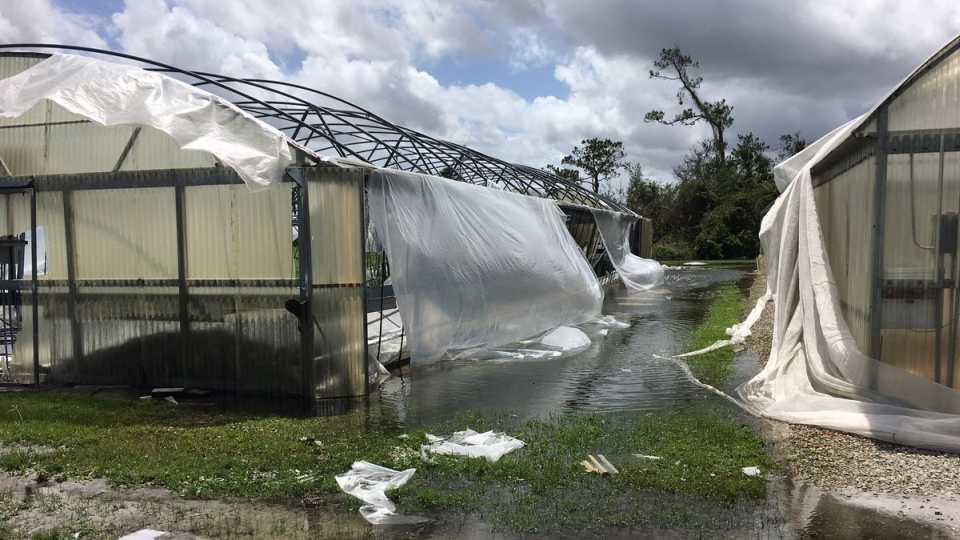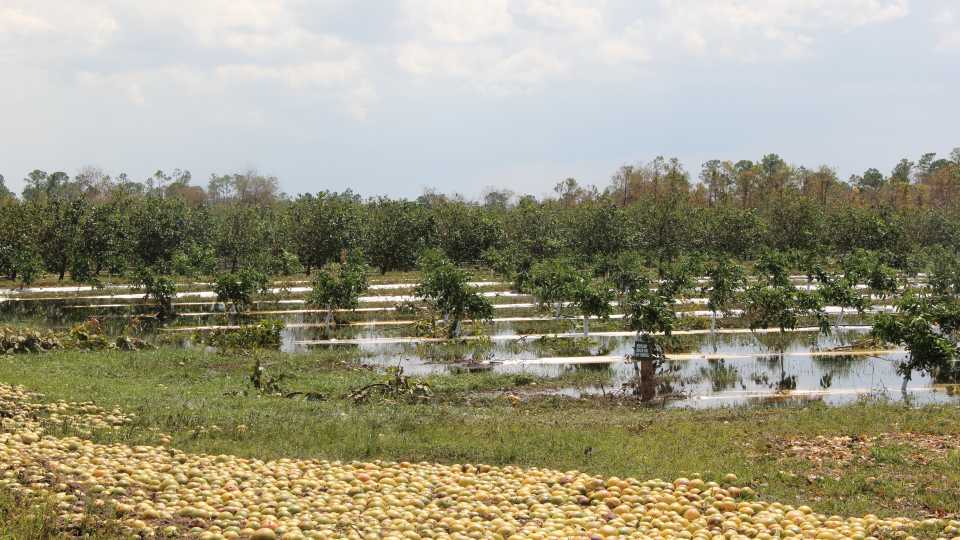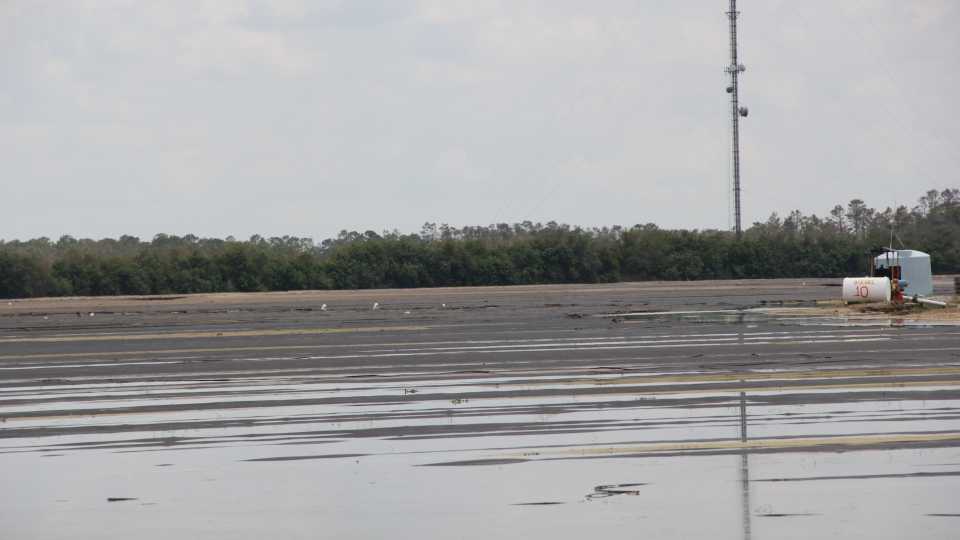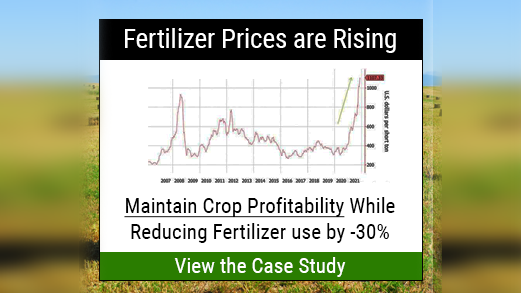Complications Persist as Florida Growers Pick up After Irma

Greenhouses on the grounds at the UF/IFAS Southwest Florida Research and Education Center in Immokalee were not spared by Irma’s winds and rain.
Photo by Monica Ozores-Hampton
After traveling thousands of miles across open water, Hurricane Irma decided to make Southwest Florida its landfall destination for the U.S. The front-row perspective had by researchers at the UF/IFAS Southwest Florida Research and Education Center (SWFREC) in Immokalee was unparalleled as to how the storm would greatly impact the state’s farming industry, not only in the region, but also the entire state.

Dr. Calvin Arnold
SWFREC Director Calvin Arnold says the storm certainly left its mark on the facility – and then some. “We had major damage to four of our older greenhouses,” he confirmed. “One was totally destroyed. The other three had major damage.”
In addition, four newer greenhouse structures were just waiting on benches of plant material to arrive. “Within a week, we were going to turn them over to the new faculty,” Arnold said. “Now, we have the benches, but the tops of the houses need to be replaced.”
Indicative of commercial vegetable growers in the area, all plots – no matter which stage of preparation — were lost. “We had water standing two and a half feet on top of some of those fields,” Arnold exclaimed.
Scanning the Citrus Situation
Similarly, experimental citrus groves on the property became casualties to Irma’s brute force. “We had water that was up a third of the distance on the canopy of the trees,” Arnold said. “All groves had water on them for five days; some seven days. That’s not good for citrus. Some of the trees are starting to wilt. Not only that, but there’s a threat of subsequent soilborne pathogens (e.g., phytophthora, Pythium).”
Arnold is expecting substantial loss. “We estimated about 25% of our trees were immediately lost – blown over so bad that it wasn’t practical to upright them or they were split,” he said.

Photo by Monica Ozores-Hampton
With so many trees felled by the storm, clearing the debris for new plantings becomes the next challenge. Beyond replacing what was lost, there is another reason for growers to be extra vigilant. “Even though the hurricane blew a lot of the psyllids away, there also were many hunkered down,” Arnold warned of the notorious HLB vector. “They’re going to come back with a vengeance. Don’t think the psyllids are gone.”
While structures, fields, and groves at the research center were left beaten, Arnold is confident the SWFREC will rebound thanks to it being a government-aided facility. He’s also painfully aware that many others aren’t so lucky. “I feel bad for all the research we lost,” he said, but I feel sick to my stomach for a lot of the growers [especially citrus], because it’s an extremely devastating time for so many of them. There’s just so many that were on thin ice financially already just trying to make ends meet, and they desperately needed this crop. It’s difficult, but the industry will come back at some level; at what level, I don’t know.”
Vegetable Growers’ Race against the Clock
Vegetable growers around the state also were hurt by Irma, but not to the same level as citrus, Arnold emphasized. “They deal with a crop that can be replanted. You give them another 60 to 90 days (depending on the crop), and they’re back to business.”
The flexibility of vegetable production is advantageous in situations like this. However, time loss is something that can’t be recovered. Regarding Florida’s winter vegetable market window exclusivity, Irma is going to throw growers off this season, Arnold insisted. “Most of the growers are blitzing hard now planting because they know the prices are going up and there’s going to be a shortage of crop,” he said.

Photo by Monica Ozores-Hampton
With the compressed timeline comes risk. Re-setting plastic beds and putting down essential fungicides, herbicides, and nematicides takes time — perhaps a little too much time to meet the market demand. Strict fumigation restrictions require growers to wait — in some cases — up to a month before being able to plant. For growers who’ve already lost precious time and money due to Irma, rolling the dice without certain crop protection might be the only way forward for this season. “They can’t do everything exactly how they’d like, and I am concerned there will be some problems for them down the road,” Arnold lamented. “They know that. They are very experienced and know they are playing Russian roulette. But they can’t sit around for three weeks waiting.”
Beyond making difficult decisions regarding insect, disease, and weed control, growers are struggling to find materials and ground dry enough to plant. Arnold said the scramble might turn out a blessing in the end. “The shortage of supplies and still-flooded fields are forcing some staggering of the date growers were expecting the crop to mature,” Arnold pointed out. “So, all of the growers aren’t going out there and planting at exactly the same time, competing, and crashing their own market.”
Arnold reported a fair number of larger vegetable operations in the area were planting as much as 50 acres a day to make up for Irma’s curve ball. “I’m really hoping our tomato, pepper, and all of those guys have a good year, especially after what they lost.”









